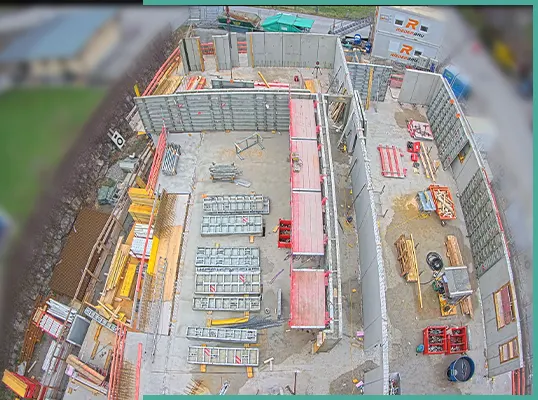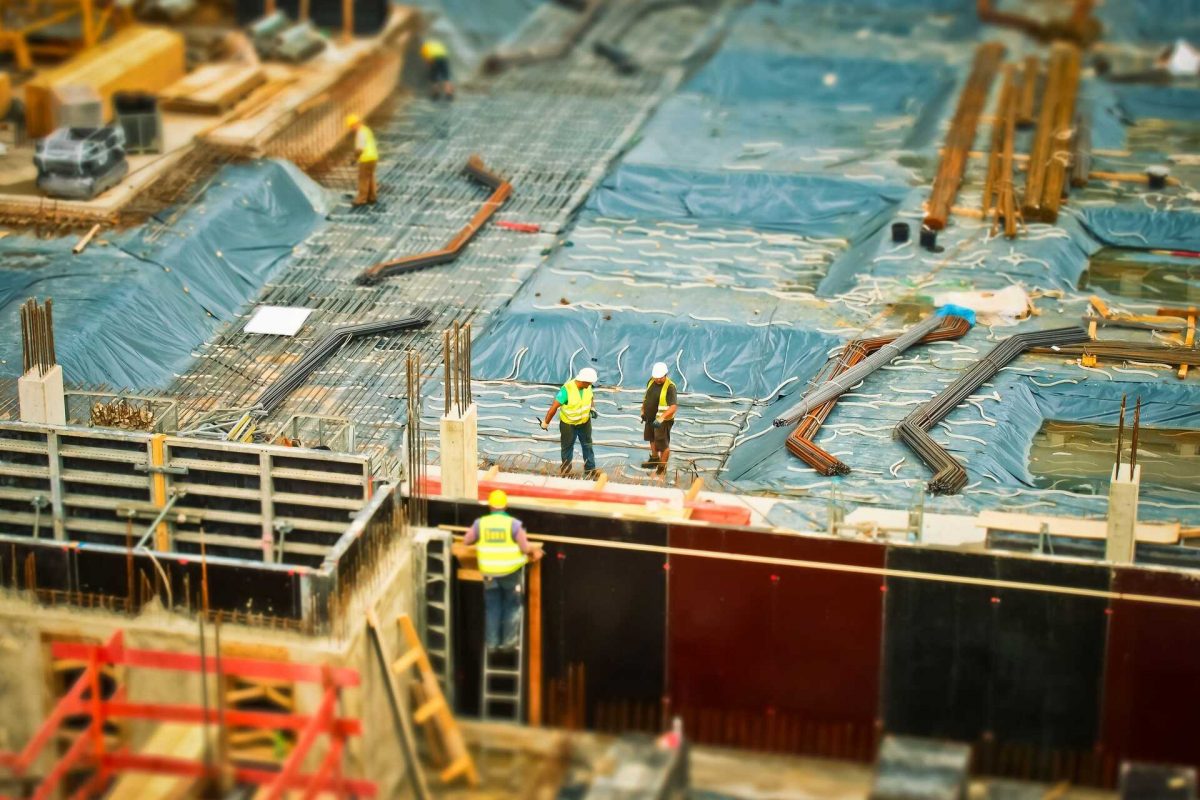In the bustling world of the construction industry, the mantra often echoed is, “Time is money.” Every delay, every misstep, and every oversight can equate to considerable financial implications. For construction managers and overseers, ensuring that projects stay on course is more than just a task; it’s a significant responsibility. In today’s digital age, this responsibility is both facilitated and complicated by the myriad of tools at our disposal.
Enter the realm of construction progress tracking software. With the rapid advancements in technology, the construction industry has seen a transformative shift. Gone are the days of manually sifting through stacks of paper and blueprints to gauge a project’s progress. Today, state-of-the-art mobile apps, cloud-based solutions, and specialized construction project management software dominate the scene, ensuring real-time, accurate, and efficient project oversight.
This article is dedicated to demystifying the best practices and tools to manage, track, and optimize construction projects. We’ll delve deep into the mechanisms, benefits, and methods to leverage technology for maximum efficiency. So, whether you’re an industry veteran looking to modernize your approach or a newcomer eager to learn the ropes, read on for a comprehensive guide to revolutionizing your construction progress-tracking methodology.
Mobile Apps: The Game Changer in Construction Sites
The digital transformation has not left any industry untouched, and construction is no exception. Among the tools leading this tech revolution, mobile apps stand tall as a game-changer, revolutionizing how construction sites operate.
a. Advantages of Using Mobile Apps in Construction Site Management
- Instant Accessibility: With smartphones and tablets becoming ubiquitous, having site-related data and tracking tools in your pocket is invaluable. Mobile apps allow construction managers to access crucial project details from any location, ensuring they’re always in the loop.
- Real-time Communication: Communication is pivotal in construction. Mobile apps bridge the gap between the construction site and the office, facilitating instant messaging, video calls, and data sharing, ensuring everyone stays informed and aligned.
- Document Management: Gone are the days of carrying hefty blueprints and paper files. Mobile apps offer a platform for storing, viewing, and annotating digital documents, making it easier to reference and share critical data.

b. Real-time Updates and On-the-Go Progress Monitoring
The modern construction industry thrives on real-time data. Mobile apps bring the advantage of:
- Push Notifications: Stay informed about milestones reached, delays encountered, or any emergencies on site.
- Geo-tagging: This feature allows for tracking the exact location of equipment, ensuring resource optimization and preventing theft or misplacement.
- Interactive Site Maps: Navigate the construction site digitally, marking progress, and noting any potential issues or areas of concern.
c. Case Study: How a Leading Construction Company Enhanced Efficiency with Mobile Apps
Consider the case of ConstructTech Inc., a leading player in the construction sector. Faced with the challenges of managing multiple projects simultaneously, the company sought a solution in technology. Investing in a bespoke mobile app tailored to their needs, they witnessed a transformation:
- Improved Communication: Site engineers and workers could instantly report updates, drastically reducing miscommunication errors.
- Digital Blueprint Access: Workers could zoom into specific sections of the digital blueprint on their devices, ensuring precision in execution.
- Enhanced Safety Protocols: With real-time monitoring, any safety concerns were immediately flagged, ensuring swift intervention and minimizing accidents.
In conclusion, mobile apps are not just a trend in construction progress tracking; they are the future. Their ability to streamline processes, enhance communication, and provide real-time data makes them indispensable in today’s construction landscape. It’s clear that for construction managers and overseers eager to stay ahead of the curve, adopting and integrating these mobile tools is not just beneficial—it’s essential.
The Role of Construction Project Management Software
Navigating the complexities of a construction project requires more than just boots on the ground. It demands an overarching system that integrates every facet of the project, from planning and execution to monitoring and reporting. This is where construction project management software plays a pivotal role, serving as the digital backbone of today’s construction industry.
a. Streamlining Tasks and Project Planning
- Unified Dashboard: A well-designed construction project management software offers a unified dashboard, giving managers an at-a-glance view of the project’s status, from resources deployed to milestones achieved.
- Task Management: By listing, categorizing, and prioritizing tasks, the software ensures that nothing falls through the cracks. Assignments can be allocated with clear deadlines, ensuring that all stakeholders are aware of their responsibilities.
- Budget Monitoring: Financial overruns can be a project’s undoing. With built-in financial tools, the software allows for budget creation, monitoring, and forecasting, keeping financial health at the forefront.
b. Benefits of Management Tools in Ensuring Seamless Execution
- Resource Allocation: Efficiently manage human resources, machinery, and materials. The software allows for the optimal allocation, ensuring no wastage and maximizing productivity.
- Collaboration Tools: Foster a culture of teamwork with integrated collaboration tools. Be it sharing documents, brainstorming solutions, or maintaining a project journal, the software ensures everyone is on the same page.
- Risk Management: Construction projects are fraught with potential risks. Management software helps in identifying, categorizing, and mitigating these risks, ensuring smooth project progression.
c. How Management Software for Construction Bridges the Communication Gap
A successful construction project is often a result of seamless communication. Here’s how software solutions enhance this aspect:
- Centralized Communication Hub: Gone are the days of endless email chains and missed calls. With an integrated communication hub, every discussion, decision, and directive finds a home, easily accessible to all relevant parties.
- Feedback Mechanisms: Constructive feedback is the cornerstone of continuous improvement. The software provides platforms for stakeholders to share feedback, be it on design, execution, or any other project facet.
- Document Sharing and Version Control: Multiple iterations of a document can lead to confusion. Construction project management software offers centralized document storage with version control, ensuring that everyone works off the most recent and approved version.
In wrapping up, construction project management software has transcended from being a mere digital tool to an essential catalyst driving the success of construction endeavors. For construction managers and overseers, leveraging this software is tantamount to laying a robust digital foundation upon which the physical edifice stands. As the construction landscape continues to evolve, the integration of such management tools will not only remain relevant but will also dictate the difference between project success and failure.
Opting for Cloud-Based Solutions
The construction industry, much like many other sectors, is experiencing a profound shift towards cloud computing. Cloud-based solutions are quickly becoming the preferred choice for construction progress tracking and management and for good reasons. Let’s delve deeper into the realm of cloud-based construction software and understand its unparalleled advantages.
a. Advantages of a Cloud-Based System
- Universal Accessibility: One of the most potent advantages of cloud-based solutions is the ability to access data from anywhere, anytime. Whether you’re on the construction site, in your office, or even halfway around the world, all you need is an internet connection to stay informed and in control.
- Scalability: Cloud solutions grow with your needs. Whether you’re handling a small residential project or a massive infrastructural undertaking, cloud systems can easily be scaled up or down based on your project’s requirements.
- Cost-Effective: Investing in cloud-based software often eliminates the need for hefty hardware infrastructure and maintenance. You pay for what you use, leading to significant cost savings in the long run.
- Data Security and Backup: Cloud providers prioritize data security, ensuring that your valuable project information is protected against unauthorized access, loss, or cyber threats. Additionally, regular backups mean that data recovery is quick and straightforward in case of any mishaps.
b. Real-Time Data Synchronization, Security, and Accessibility
- Instant Updates: Cloud systems operate in real time. This means any changes, updates, or inputs are immediately reflected and available to all authorized users, ensuring that everyone stays informed and aligned.
- Secure Collaboration: Whether it’s sharing designs, budgets, or project timelines, cloud-based platforms offer secure collaboration tools, ensuring that data integrity is maintained even when multiple stakeholders are involved.
- Optimized Mobile Integration: Cloud solutions and mobile devices go hand in hand. Be it smartphones or tablets, these platforms are optimized for mobile access, ensuring seamless operation and a user-friendly experience even on smaller screens.
c. The Value Proposition of Cloud Solutions in Tracking Progress
The essence of construction progress tracking lies in its accuracy, timeliness, and clarity. Cloud solutions amplify these facets:
- Automated Reporting: Generate instant reports on project status, budget utilization, task completion, and more. This not only saves time but also ensures data accuracy.
- Integration Capabilities: Cloud-based construction software can often be integrated with other tools and platforms, be it for financial accounting, resource management, or communication, creating a cohesive digital ecosystem.
- Feedback Loops: Cloud solutions facilitate easy feedback collection and implementation. Whether it’s feedback from a site engineer, a stakeholder, or a client, cloud platforms streamline the process, ensuring continuous improvement.
To encapsulate, the move towards cloud-based solutions in construction progress tracking is not just a trend; it’s a paradigm shift. Embracing the cloud is akin to embracing efficiency, scalability, and future readiness. For construction managers and overseers aiming for excellence in project management and delivery, the cloud is not just an option; it’s an imperative.
The Importance of Time Tracking in Construction
In the intricate tapestry of construction management, time stands as one of the most crucial threads. It not only dictates the pace but also influences the cost, quality, and overall success of a project. Effective time tracking in construction is no longer a mere convenience but an absolute necessity, given the complex dynamics and multiple moving parts involved in projects.
a. Monitoring Hours for Labor and Task Efficiency
- Resource Optimization: Understanding how much time is spent on each task helps managers allocate resources more effectively. This ensures that both human and material resources are used optimally, avoiding wastage and inefficiencies.
- Productivity Analysis: By tracking time, managers can gauge the productivity of teams and individuals. This provides insights into areas where training might be needed or where processes can be streamlined.
- Budget Adherence: Labor costs are a significant portion of construction budgets. Accurate time tracking ensures that labor costs are monitored, aiding in staying within budgetary limits.
b. Tools and Software Solutions for Precise Time Tracking
- Digital Timesheets: Modern time tracking tools have replaced manual timesheets, offering easier input, instant updates, and integration with other management software.
- Geofencing: Advanced software solutions offer geofencing features that automatically log workers’ time based on their presence within the construction site, ensuring accuracy.
- Real-time Monitoring: Many tools now allow for real-time monitoring, providing managers with instantaneous overviews of who is working on what, aiding in better task management.
c. How Time Tracking Directly Impacts Project Profitability
The adage, “Time is money,” holds especially true in the construction industry. Here’s how:
- Reduced Idle Time: By effectively tracking time, managers can identify and reduce idle or downtime, ensuring that every minute is used productively, leading to faster project completion.
- Accurate Billing: For projects or tasks billed by the hour, precise time tracking ensures that clients are billed correctly, and companies are paid for every minute of work.
- Forecasting: With accurate time logs, managers can forecast future projects more effectively, setting realistic timelines and budgets based on historical data.
In the grand scheme of construction management, the benefits of effective time tracking ripple through every aspect of a project. It aids in ensuring tasks are completed on schedule, budgets are adhered to, and resources are optimally utilized. For any construction manager or overseer, a robust time-tracking mechanism isn’t just a tool; it’s an ally in ensuring project success.
Leveraging Professional Services for Effective Implementation
While tools, software, and cloud-based solutions offer a plethora of benefits, implementing them effectively requires more than just purchasing a subscription or downloading an app. It demands expertise, a strategic approach, and meticulous planning. This is where professional services step in, bridging the gap between software capabilities and their real-world application.
a. The Need for Expertise in the Construction Domain
- Customization: Every construction project is unique in terms of scale, requirements, and challenges. Professional services help tailor software solutions to cater to specific project needs, ensuring a snug fit.
- Integration: With multiple tools and software solutions in play, integration is crucial. Experts ensure that these tools communicate seamlessly with one another, enhancing the efficacy of the entire system.
- Training: Implementing new software isn’t enough. Stakeholders, from managers to site workers, need to be adept at using them. Professional services often include comprehensive training modules, ensuring everyone is up-to-speed.
b. Long-Term Benefits of Partnering with Professional Services
- Continuous Improvement: The world of software is dynamic, with updates, new features, and improvements being rolled out regularly. Professional services ensure that construction firms always stay abreast of these changes, continually refining their systems.
- Risk Mitigation: With expert oversight, potential issues—whether they’re related to software glitches, user errors, or integration challenges—are identified and addressed proactively.
- ROI Optimization: The investment in software solutions and tools is significant. Partnering with professional services ensures this investment yields maximum returns through optimal utilization and streamlined processes.
In essence, while tools and software lay the groundwork for enhanced construction progress tracking, it’s the expertise of professional services that ensures this foundation is strong, stable, and future-proof. For construction managers and overseers, this partnership is an assurance of deriving maximum value from their digital arsenal, paving the way for sustained success in a competitive landscape.
Real-Time Monitoring and Its Impact
In an era where instantaneity is prized, the construction industry is not left behind. Real-time monitoring is more than just a buzzword; it’s the linchpin that holds the entire project together, ensuring efficiency, safety, and successful delivery. Let’s dive into the significance of real-time monitoring in construction and its transformative effects.
a. What is Real-Time Monitoring in Construction?
- Instantaneous Data Collection: Unlike traditional methods where data was collected and then reported at the end of the day or week, real-time monitoring ensures that information from the construction site is uploaded and updated continuously.
- Synchronized Dashboards: Real-time systems mean that dashboards and tracking platforms are immediately updated as data pours in, allowing all stakeholders to see the same data simultaneously.

b. The Multifaceted Benefits of Real-Time Monitoring
- Enhanced Decision Making: With immediate access to the latest data, managers and overseers can make informed decisions promptly, preventing potential issues or capitalizing on newfound efficiencies.
- Improved Safety: Real-time monitoring of equipment, site conditions, and worker locations can flag potential safety concerns instantly, allowing for immediate corrective action.
- Cost Savings: Immediate insights mean that resource wastage or unproductive practices can be identified and rectified instantly, saving both time and money.
- Stakeholder Communication: Real-time data ensures that all stakeholders, from clients to contractors, are on the same page, fostering transparency and trust.
c. Real-World Application: Seeing the Impact Firsthand
Consider the scenario of a construction site where a critical piece of machinery is malfunctioning. With traditional monitoring, this malfunction might be reported at the end of the day, causing delays. However, with real-time monitoring:
- The malfunction is flagged immediately.
- Relevant personnel are alerted.
- Spare parts or repairs are arranged without delay.
- Workflow is adjusted to account for the downtime, ensuring other tasks proceed unabated.
This real-world scenario underscores how real-time monitoring can pivot a potential setback into a managed situation with minimal disruption.

d. Integrating Real-Time Monitoring with Other Tools
The potency of real-time monitoring isn’t just in its standalone capability but also in how it integrates with other tools:
- Project Planning Tools: Instant data can be used to adjust project timelines, ensuring that plans are always aligned with ground realities.
- Budgeting Software: Real-time tracking of expenses and resource utilization ensures budgets are adhered to and financial forecasts are updated continuously.
- Communication Platforms: Instant alerts and updates can be channeled through communication tools, ensuring immediate dissemination of crucial information.
In summation, real-time monitoring is the heartbeat of modern construction management. It keeps all aspects of a project alive, dynamic, and responsive. For any construction manager or overseer, it’s not just about having data; it’s about having data now. This immediacy is what sets apart progressive construction projects from the rest, delivering results that are timely, efficient, and consistently aligned with the overarching vision.
Comprehensive Features: What to Look for in a Software Solution
Choosing the right construction progress-tracking software is akin to selecting a valuable team member. You need reliability, versatility, and a solution that aligns seamlessly with your project’s specific demands. With a plethora of options flooding the market, how do you make an informed choice? By focusing on comprehensive features. Here’s a guide on the essential features to prioritize when evaluating a software solution for construction management.
a. Intuitive User Interface
- Ease of Navigation: The software should be easy to navigate, allowing users to find the information or tools they need without extensive training.
- Dashboard Customization: A personalized dashboard that displays the most relevant metrics and data points for easy access and interpretation can streamline tasks.
b. Robust Project Planning and Scheduling Tools
- Interactive Gantt Charts: Visual representations of project timelines, with drag-and-drop functionality for easy adjustments, are indispensable.
- Resource Allocation: Tools that help assign and track resources, be it manpower, machinery, or materials, ensure optimal utilization and prevent bottlenecks.
c. Real-Time Monitoring and Reporting
- Instant Alerts: Notifications for milestones achieved, potential issues, or safety concerns can guide timely interventions.
- Automated Reporting: Generate daily, weekly, or monthly reports at the click of a button, offering insights into project progress, budget adherence, and more.
d. Time Tracking and Labor Management
- Digital Timesheets: Easy logging of hours, approval workflows, and integration with payroll software simplify labor management.
- Productivity Analysis: Tools that provide insights into individual and team productivity levels can help refine processes and offer targeted training.
e. Cloud-Based and Mobile Integration
- Remote Access: Cloud-based solutions that can be accessed from any device and location, ensuring continuous project oversight.
- Mobile Optimization: Given the on-the-go nature of construction management, a software solution should be seamlessly usable on tablets and smartphones.
f. Financial Management and Budgeting
- Cost Forecasting: Predictive tools that help forecast costs based on real-time data and historical trends.
- Expense Tracking: Log and monitor all project-related expenses, ensuring budgetary compliance.
g. Communication and Collaboration Tools
- Integrated Chat Platforms: Real-time communication channels embedded within the software streamline discussions and decision-making.
- Document Sharing and Management: A centralized repository for all project documents, with version control and collaborative editing capabilities.
h. Safety and Compliance Modules
- Safety Checklists: Automated checklists to ensure all safety protocols are followed meticulously.
- Compliance Alerts: Notifications regarding upcoming inspections, permit renewals, or any other compliance-related milestones.
i. Extensibility and Integration
- API Access: The software should easily integrate with other tools, from accounting software to HR platforms, creating a cohesive tech ecosystem.
- Scalability: As your projects grow in size and complexity, the software should adapt, ensuring continued efficiency.
In the labyrinth of construction management, the right software solution acts as both your compass and roadmap. As you evaluate your options, prioritize comprehensive features that offer a holistic solution rather than isolated functionalities. The objective is to find a tool that’s not just about tracking progress but elevating the very essence of project execution and delivery.
Bringing It All Together
The construction landscape is vast, ever-changing, and rife with complexities. Each project is a testament to human ingenuity, a symphony of collaboration, planning, and execution. But as any seasoned construction manager knows, orchestrating this symphony requires more than just on-site expertise; it demands a keen sense of management, foresight, and the right set of digital tools.
From the transformative power of mobile apps, bringing agility right at the fingertips of managers, to the reliability of cloud-based solutions offering flexibility and real-time access, the digital era has enriched the construction industry in innumerable ways. The emergence of robust construction progress-tracking software solutions is not merely a trend; it’s a paradigm shift. A shift towards precision, efficiency, and heightened project success.
But, as we’ve delved deep into each aspect, one truth stands clear: tools and software are enablers. Their true potential is unlocked when they’re seamlessly integrated into the project’s fabric, tailored to its unique demands, and used judiciously. Whether it’s leveraging professional services for pinpoint implementation or ensuring real-time monitoring for dynamic decision-making, the objective is holistic project oversight.
For construction managers and overseers, the challenge is no longer just about erecting structures but building lasting legacies. Legacies of projects delivered on time, within budget, and exceeding quality standards. And in this endeavor, the role of comprehensive management tools cannot be overstated.
As we wrap up our exploration, let’s return to the essence – construction is about creation. And in today’s world, it’s about creating smarter, faster, and more efficiently than ever. Embrace the digital tools, harness their potential, and set the stage for projects that aren’t just completed but celebrated. Here’s to a future where every beam, brick, and blueprint is a testament to unparalleled management excellence!




